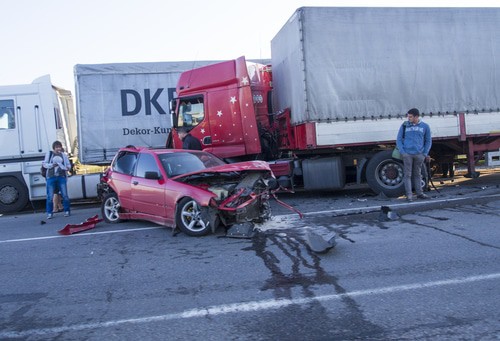
Truck accidents in New York are among the most devastating types of collisions on the road. They often result in serious injuries to the people involved, extensive property damage, and are followed by complicated legal battles. It is not a pretty scene. If you’re an unfortunate victim of such an accident, securing fair compensation hinges on one crucial factor: proving fault.
Unlike standard car crashes, truck accident cases involve multiple parties and many responsibilities. That’s why working with an experienced motor vehicle accident attorney in Queens can make all the difference. In this article, we’ll look into the types of evidence that help establish fault in a New York truck accident case.
Understanding Fault in New York Truck Accidents
Determining who is at fault in a truck accident isn’t always as straightforward as you may think. As the victim, you may understandably point fingers at the truck driver. However, New York follows a comparative negligence system, which means that multiple parties can share responsibility for a crash, and the compensation a victim receives can be reduced based on their percentage of fault. For example, insurance carriers can assign blame with a 70/30 split.
In truck accidents, potential liable parties may include the truck driver, the trucking company, a maintenance contractor, or even the manufacturer of a faulty truck part. That’s why identifying fault requires a clear understanding of the accident’s circumstances and access to solid evidence, which a competent New York truck accident lawyer would be able to provide you with. Let’s give you the down-low.
The Evidence You Need to Prove Fault
Unlike typical car accidents, truck collisions often involve commercial vehicles governed by strict federal and state regulations. Hence, you must gather strong, relevant evidence that can reveal negligence and help hold the correct parties accountable. Here are the most important types of evidence used in these cases:
- Police Reports
A police report is often the first official record of the accident. It includes information such as the officer’s observations, statements from drivers and witnesses, and any citations issued at the scene. If the truck driver violated traffic laws (like running a red light or speeding), this may be noted and used as evidence of fault.
- Photographic and Video Evidence
Photos taken at the accident scene can capture critical details such as vehicle damage, skid marks, weather conditions, and road signage. Surveillance cameras, dash cams, or traffic light cameras may also provide video footage that visually confirms how the collision occurred. These visuals can often be more persuasive than written statements alone.
- Eyewitness Testimony
Neutral bystanders who saw the crash unfold can provide unbiased accounts that support your version of events. Their observations can reinforce what’s found in the police report or contradict the truck driver’s statements, especially if the trucking company tries to deny liability.
- Electronic Logging Devices (ELDs) and Black Box Data
Commercial trucks are equipped with Electronic Logging Devices and black boxes that record operational data. These devices can reveal if the driver was speeding, when they braked, and how long they’d been on the road. This helps to understand whether fatigue or reckless driving on the truck driver’s part played a role.
- Maintenance and Inspection Records
Trucking companies are required to keep detailed maintenance logs. These records can show whether the truck was properly maintained or if mechanical failures contributed to the accident. A pattern of skipped inspections or overdue repairs may indicate systemic negligence.
- Driver Logs and Employment Records
These documents can uncover whether the driver was qualified, trained, or had a history of violations. They may also show if the trucking company pressured the driver to violate hours-of-service rules, which can be important to establishing employer liability.
The Role of Truck Accident Lawyers
Even if you’re equipped with strong evidence, interpreting and presenting it effectively is a whole other can of worms. That is where the expertise of legal and investigative professionals comes in.
A skilled Manhattan truck accident lawyer will know how to act quickly and gather time-sensitive evidence, such as black box data or surveillance footage, before it’s lost or altered. They often work with accident reconstruction experts who can analyze vehicle damage and road conditions to paint a detailed picture of how the crash occurred. These lawyers help establish fault clearly and convincingly, especially when multiple parties are involved or when the trucking company disputes liability.
Conclusion
Proving fault in a New York truck accident demands solid, well-documented evidence and professional support. Each piece of evidence plays an important role in building a strong claim. If you’ve been injured in a truck crash, don’t face the legal process alone. Consult an experienced truck accident attorney to protect your rights and pursue fair compensation.
